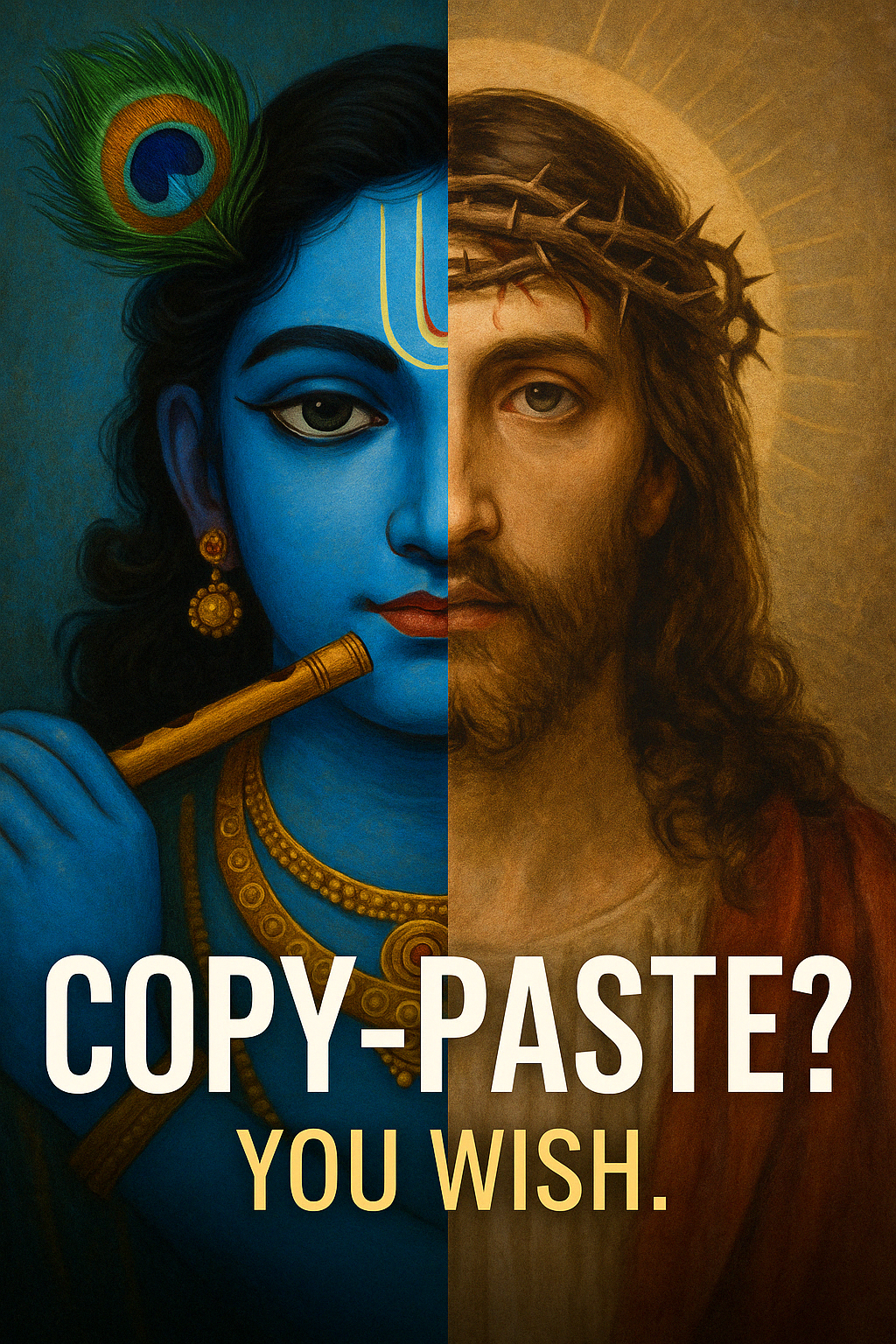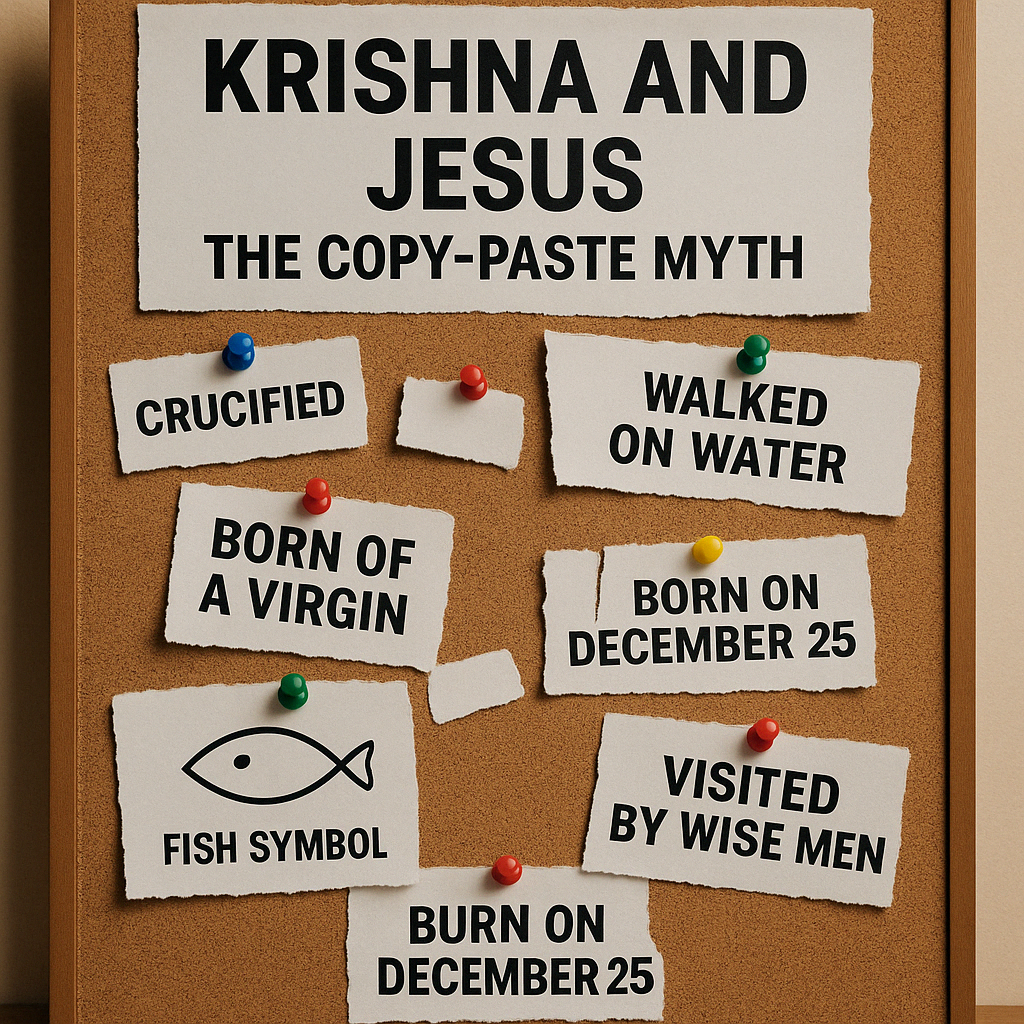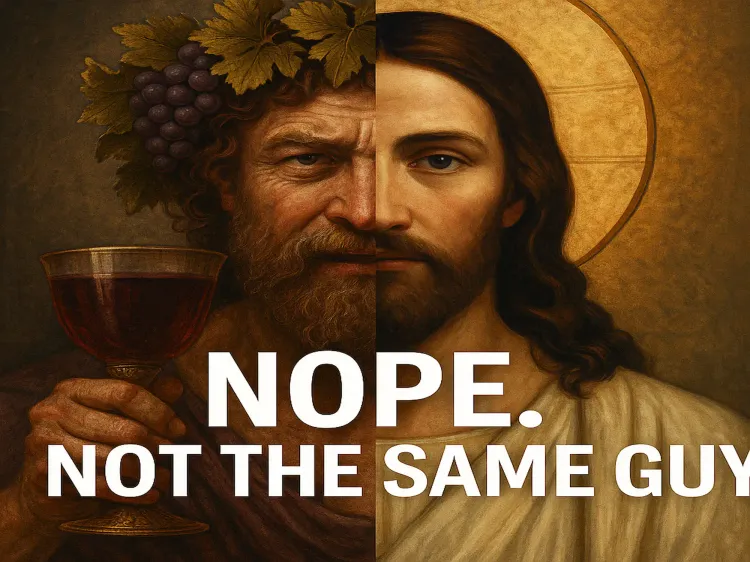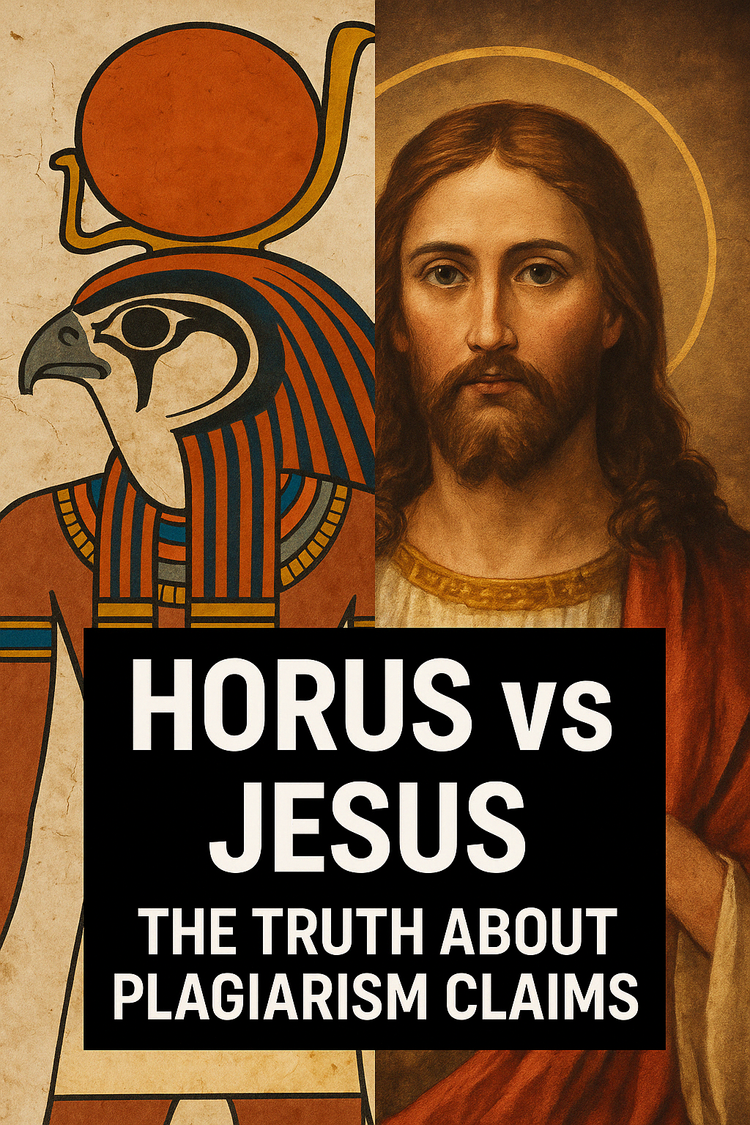Krishna and Jesus: The Copy-Paste Myth That Won’t Die

TL;DR
The meme claiming Jesus was copied from Krishna is a delightful exercise in creative writing, but not in actual history. No virgin birth, no crucifixion, no resurrection. Let's stop pretending a blue-skinned flute player from ancient India and a Galilean preacher have interchangeable résumés.
Krishna: Divine Mischief, Warrior Hero, and Not a First-Century Carpenter
Krishna is one of Hinduism’s most revered deities, an avatar of Vishnu, and a key figure in epic Hindu literature. His life, chronicled in the Mahabharata, Bhagavata Purana, and Harivamsa, includes divine mischief, profound philosophy, and the occasional demon-slaying.
- Born to imprisoned parents during a time of political unrest? Yes.
- Played the flute and romanced cowherd girls? Absolutely.
- Delivered the Bhagavad Gita from a chariot during a civil war? Iconic.
Is any of this similar to the story of Jesus? Not unless your metric for similarity is "famous religious figure with followers."
Claim: Krishna Was Born on December 25 (Wasn’t Everybody?)
Hindu scriptures never assign Krishna a December 25 birthdate. His actual birthday, Janmashtami, is celebrated in August or September according to the lunar calendar (Mettinger 78; Wright 102). Seriously, you meme writers gotta crack a book once in a while. 1.2 billion Hindus know this already!
Claim: Krishna Was Born of a Virgin [snicker] Not Quite.
Krishna’s mother, Devaki, was married to Vasudeva and had seven children before Krishna. That’s not a virgin birth—it’s more like anti-virgin birth. (Ehrman 67; Evans 94; Ulansey 145).
Claim: Wise Men Visited Krishna at His Birth
No ancient Hindu text mentions three wise men, or any wise men, visiting Krishna with symbolic gifts. In fact, Krishna was hidden at birth to protect him from being killed by his uncle Kamsa (Mettinger 83; Boyd and Eddy 139).

Claim: A Star Announced Krishna’s Birth
While Hindu mythology includes omens, there is no guiding star announcing Krishna’s birth. That’s a Christian detail from the Gospel of Matthew (Evans 99; Ehrman 75; Ulansey 151).
Claim: Krishna Was Crucified -- Wait—was Krishna crucified? That one’s ambitious.
Crucifixion doesn't appear anywhere in Krishna's story. According to the Mahabharata and Bhagavata Purana, Krishna dies when a hunter accidentally shoots him in the foot while he's resting in the forest—a far cry from Roman-style execution (Smith 142).
Crucifixion as a method of execution first appears in the historical record among the Persians around the 6th century BCE. That’s already centuries after the core Krishna stories were circulating orally in India—some parts of the Mahabharata may date as early as 900 BCE, with the Bhagavata Purana solidifying by the 3rd century CE. In other words, Krishna was on the scene before crucifixion was.
No cross, no crown of thorns, no Roman governor. Just a tragic case of mistaken identity and a misfired arrow.
Claim: Krishna Was Resurrected
Krishna's death leads to his soul ascending, in accordance with Hindu beliefs about moksha (liberation), not resurrection. Hinduism doesn’t share Christianity’s resurrection theology (Carrier 56).
Claim: Krishna Walked on Water
Krishna tamed rivers and parted waters, but there are no stories of him walking on water like Jesus does in the Gospels (Nash 112).
In some regional folk versions, Krishna and his father Vasudeva are said to have crossed the Yamuna River beneath its surface shortly after his birth, protected by the multi-headed serpent Shesha. It’s a dramatic scene of divine protection—but not a miracle performed by Krishna himself, and certainly not a parallel to strolling across Galilean waves.
Claim: Krishna Turned Water Into Wine
No Hindu text describes Krishna performing a miracle like Jesus' water-to-wine moment at Cana. That miracle is unique to the New Testament (Smith 148).
Here’s one I see all the time: ‘Krishna had 12 disciples.’”
Krishna had companions like Arjuna, but not twelve disciples. The structured disciple model is unique to Christianity (Carrier 63).
Claim: Krishna Was Associated with a Fish Symbol
The fish symbol belongs to Vishnu's Matsya avatar, not Krishna. Linking Krishna to Christian ichthys imagery is a symbolic mix-up (Nash 116).
In early Christianity, the fish symbol—called ichthys—was an acronym in Greek: Iēsous Christos, Theou Yios, Sōtēr, meaning “Jesus Christ, Son of God, Savior.” It had theological significance unique to Christian identity and never had any connection to Krishna or Hindu tradition.
Conclusion
Most of the so-called parallels between Krishna and Jesus are surface-level mashups, often created by 19th-century theosophists or modern meme-makers. The similarities vanish when you read the actual texts. One is a playful, philosophical god from ancient India; the other is a crucified Jewish teacher from Roman-occupied Judea. They’re both compelling—but they’re not the same story.
Works Cited
Boyd, Gregory A., and Paul Rhodes Eddy. The Jesus Legend: A Case for the Historical Reliability of the Synoptic Jesus Tradition. Baker Academic, 2007.
Carrier, Richard. On the Historicity of Jesus: Why We Might Have Reason for Doubt. Sheffield Phoenix Press, 2014.
Ehrman, Bart D. Did Jesus Exist? The Historical Argument for Jesus of Nazareth. HarperOne, 2012.
Evans, Craig A. Fabricating Jesus: How Modern Scholars Distort the Gospels. IVP Books, 2006.
Mettinger, Tryggve N. D. The Riddle of Resurrection: "Dying and Rising Gods" in the Ancient Near East. Almqvist & Wiksell, 2001.
Nash, Ronald H. The Gospel and the Greeks: Did the New Testament Borrow from Pagan Thought? P&R Publishing, 2003.
Smith, Huston. The World's Religions: Our Great Wisdom Traditions. HarperOne, 1991.
Ulansey, David. The Origins of the Mithraic Mysteries: Cosmology and Salvation in the Ancient World. Oxford University Press, 1991.
Wright, N. T. The Resurrection of the Son of God. Fortress Press, 2003.





Comments ()